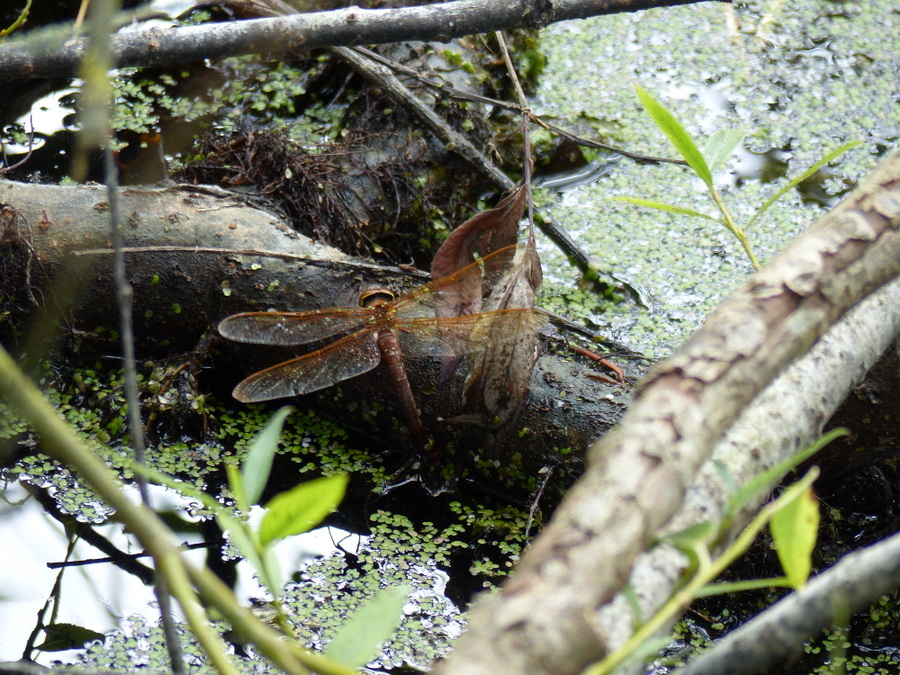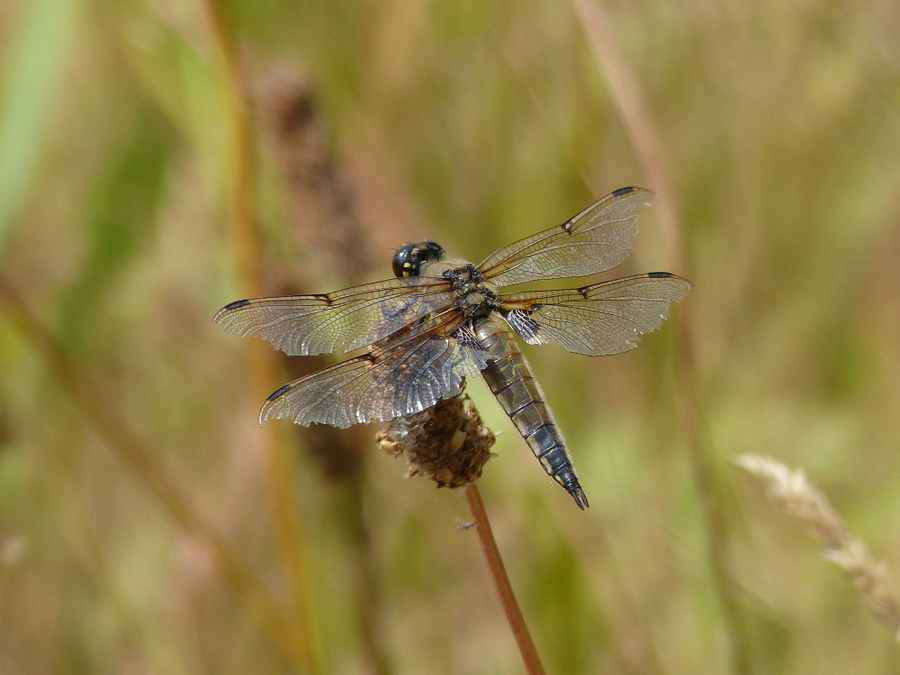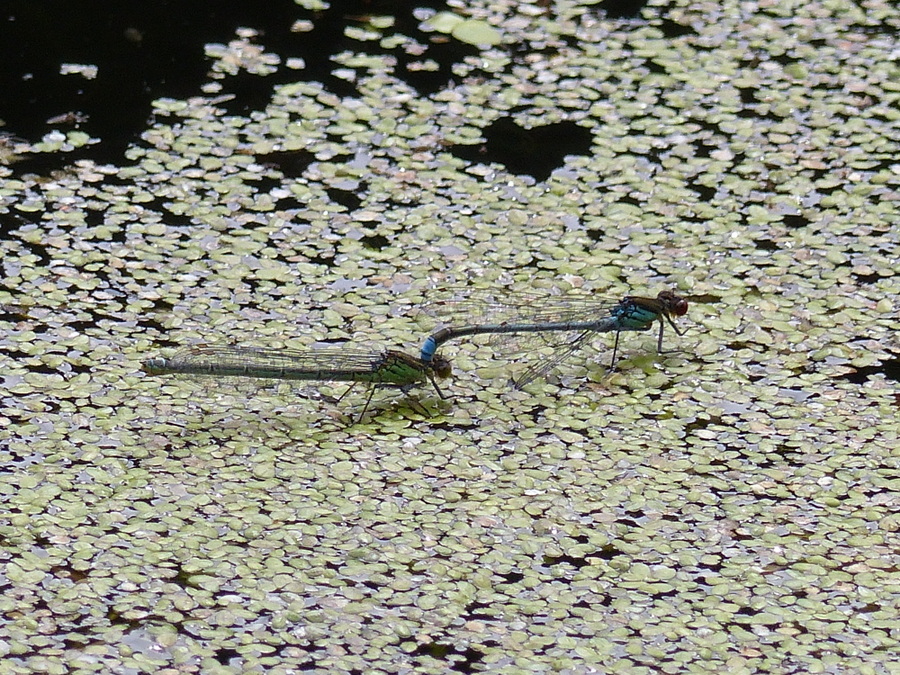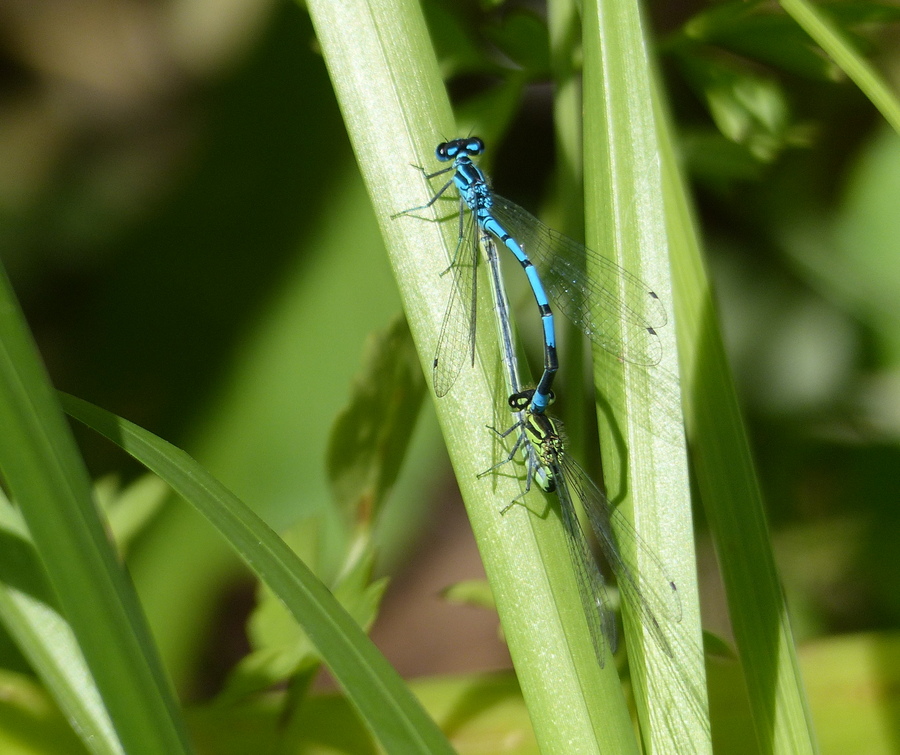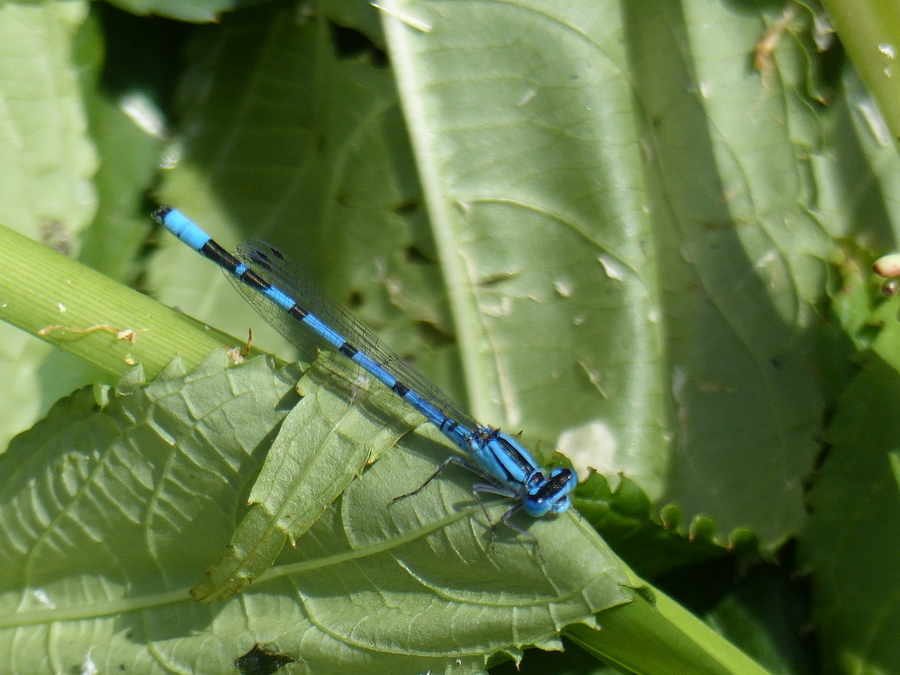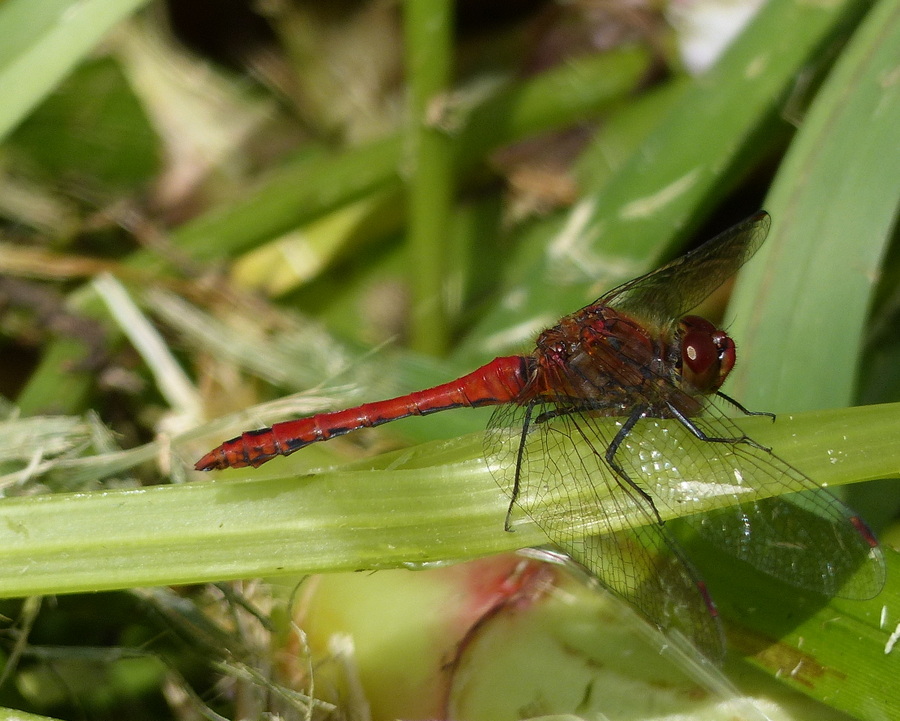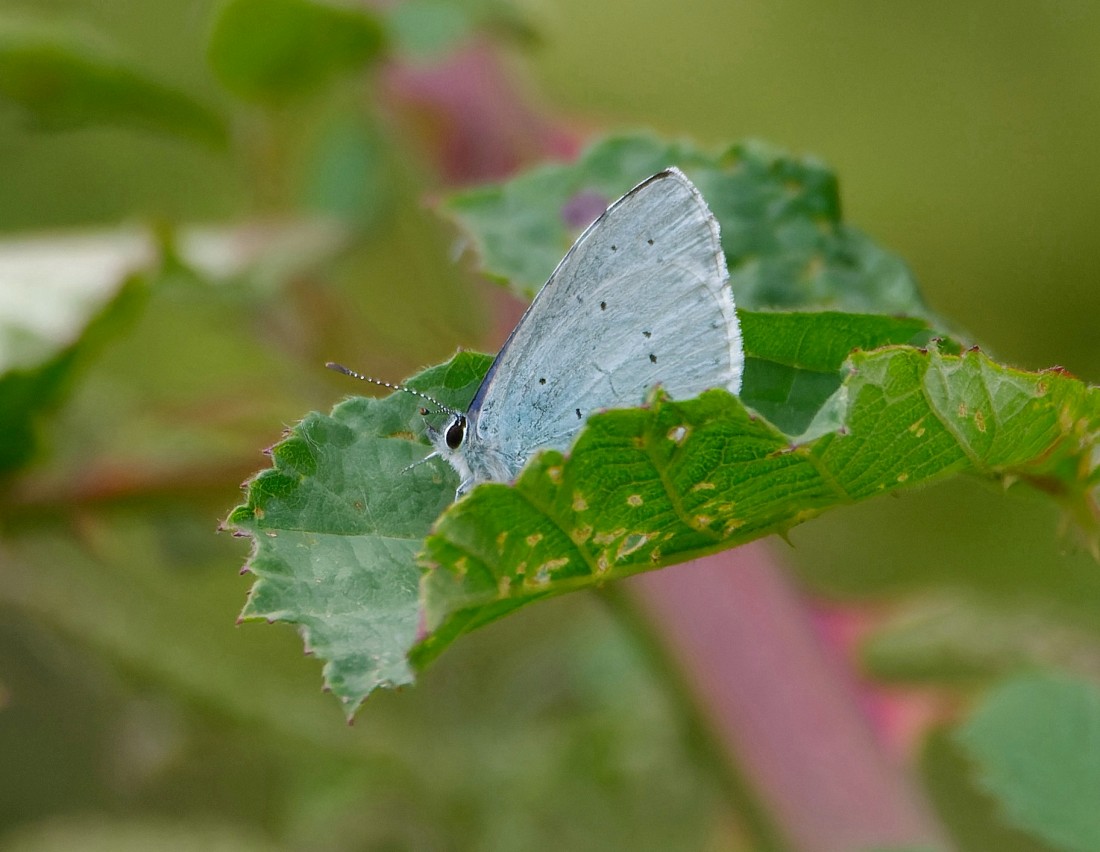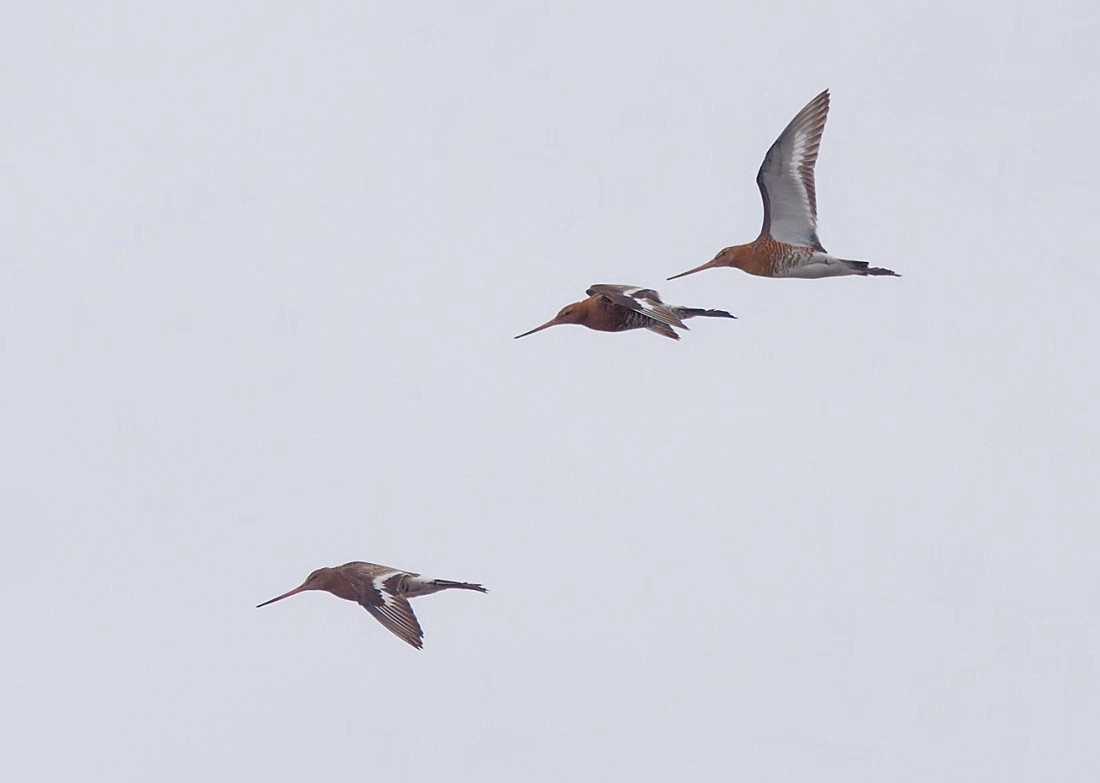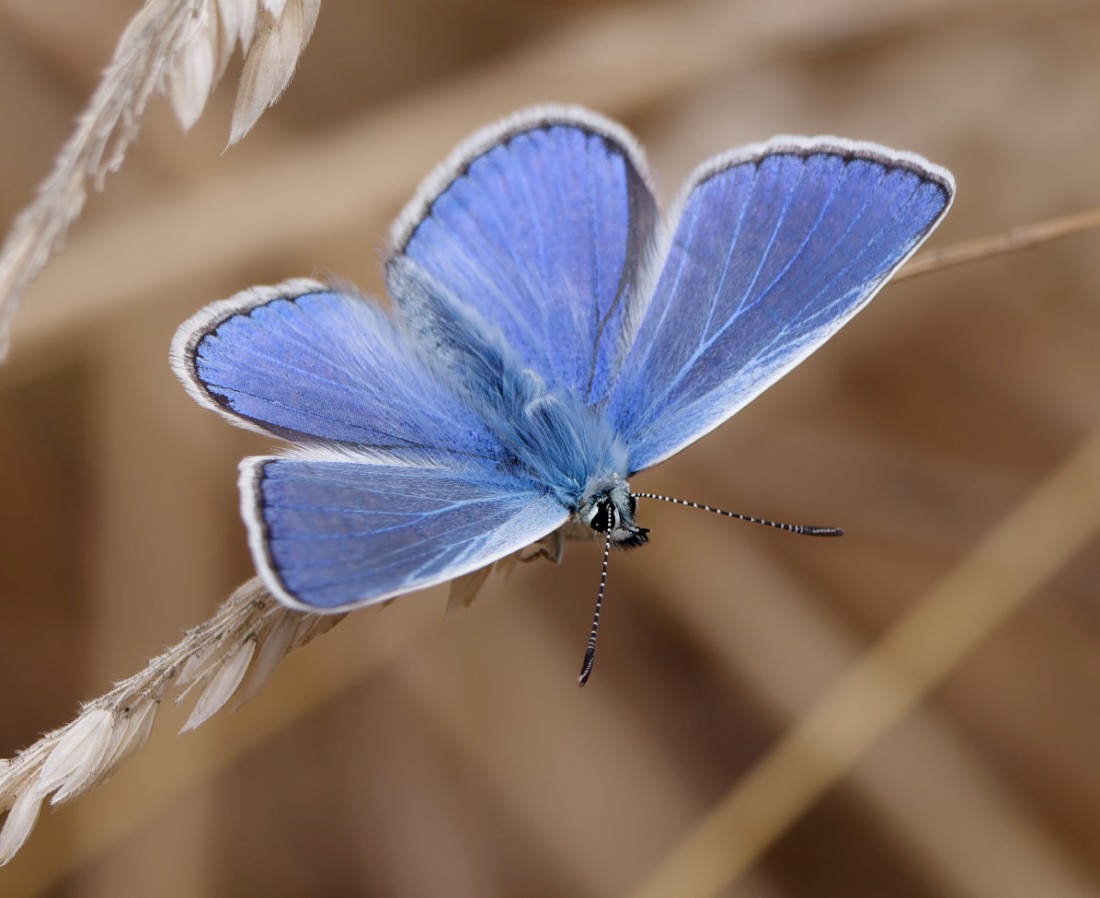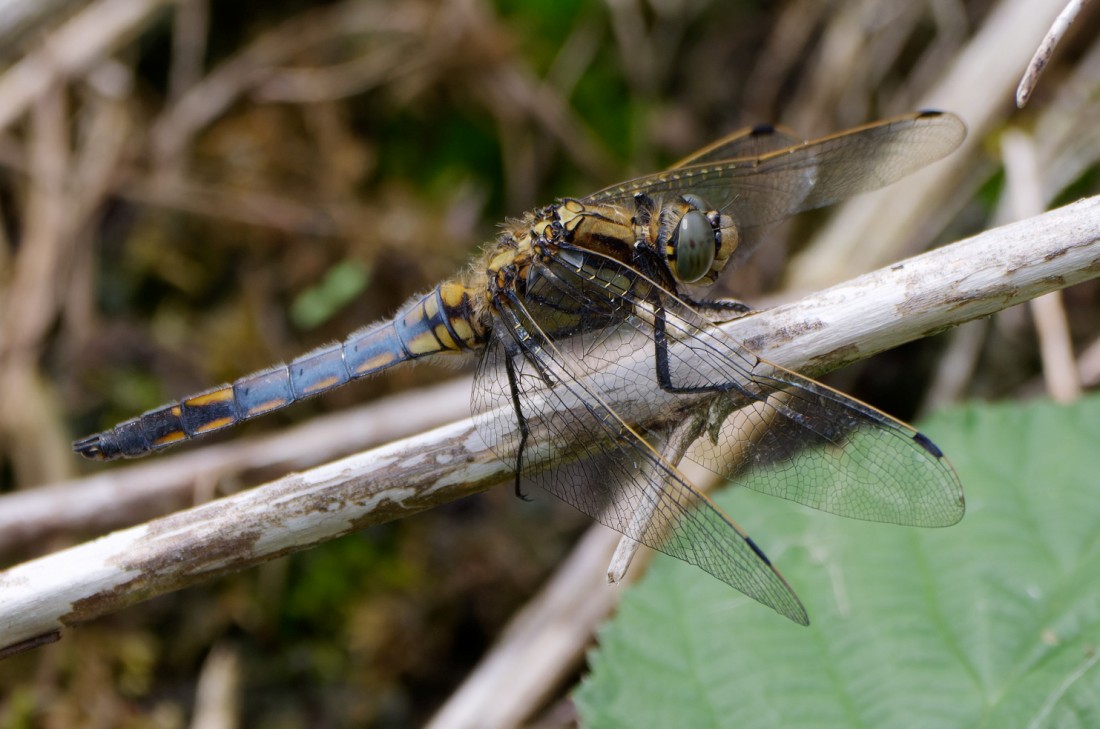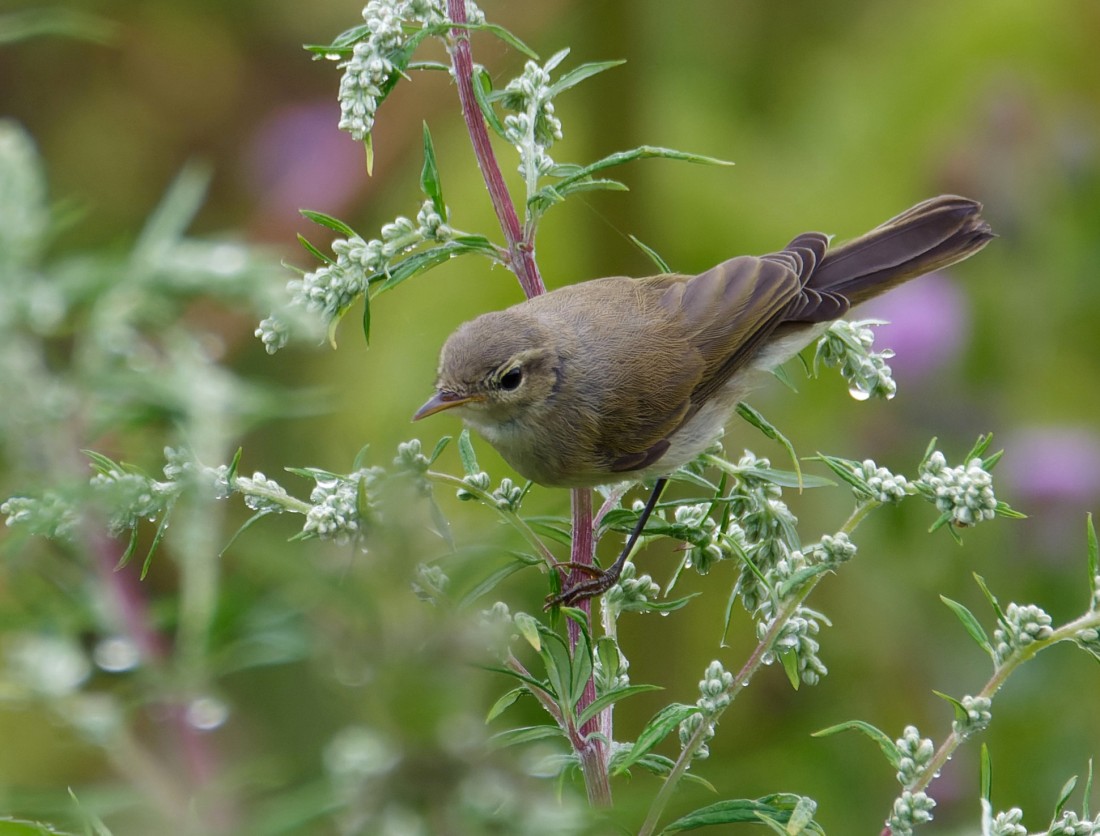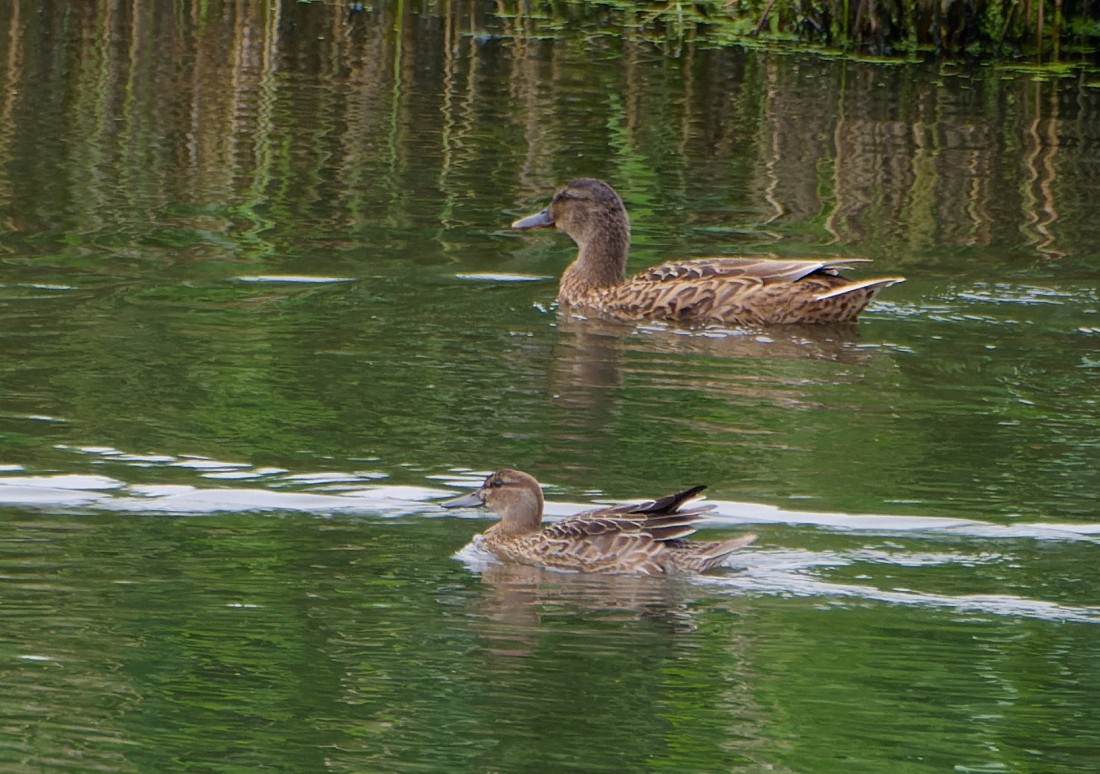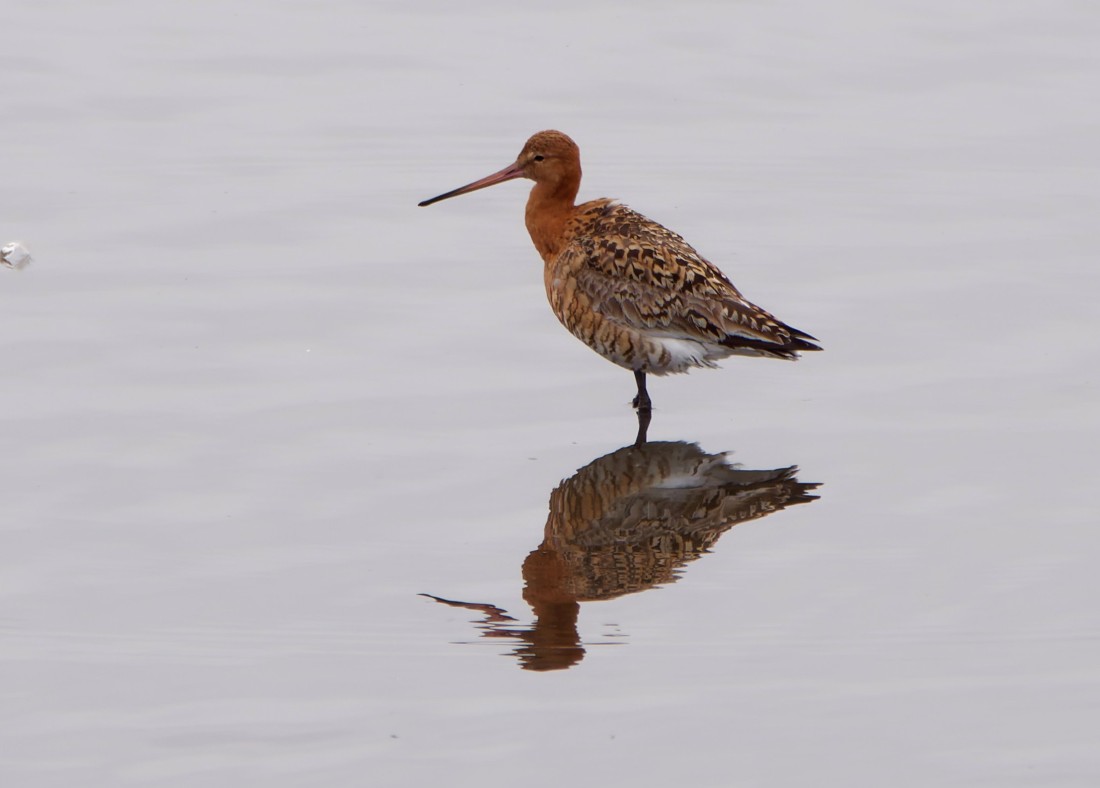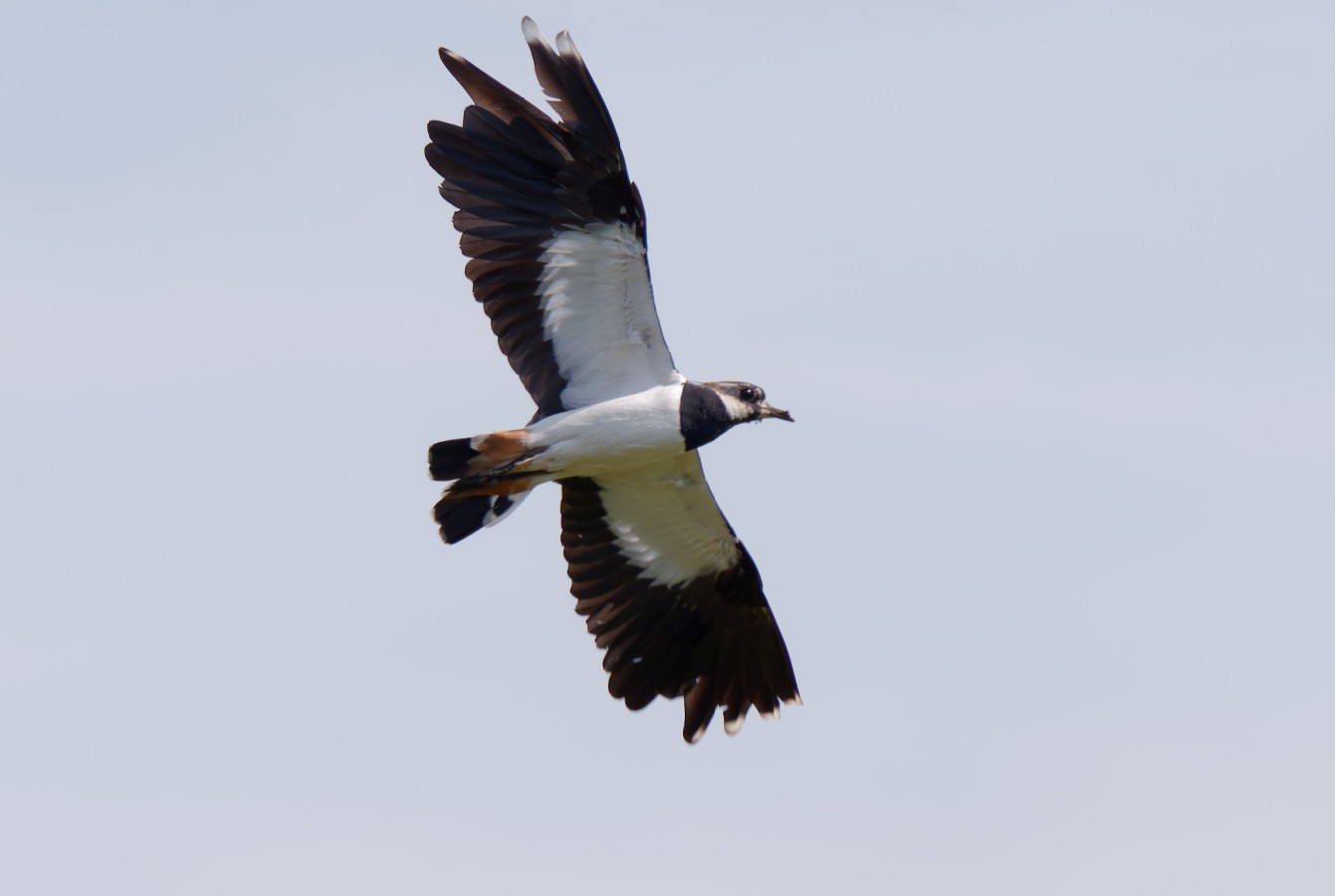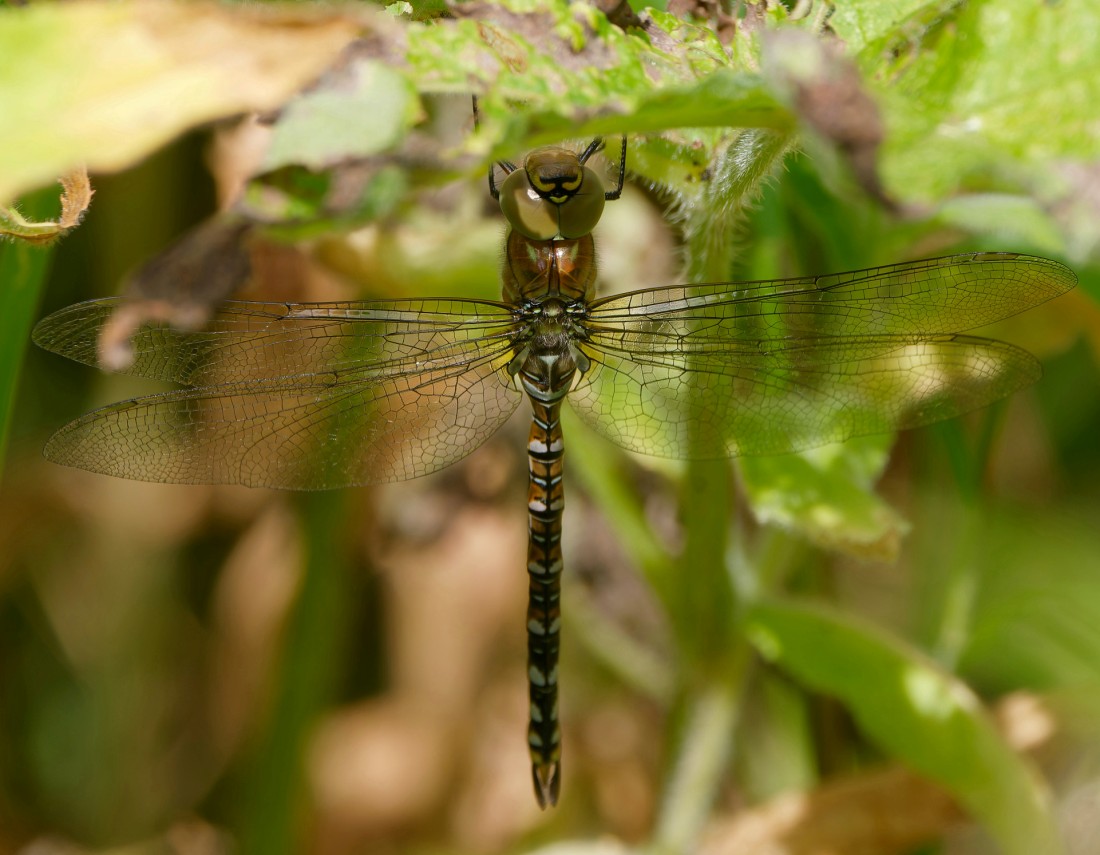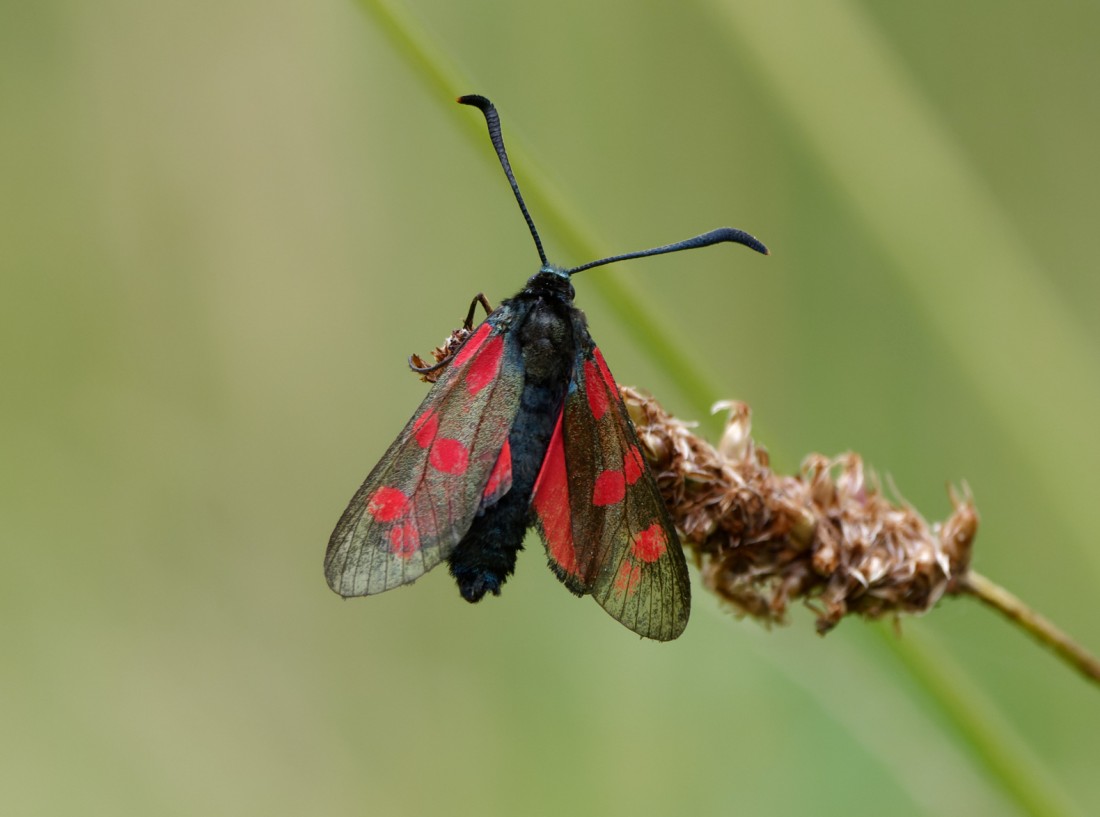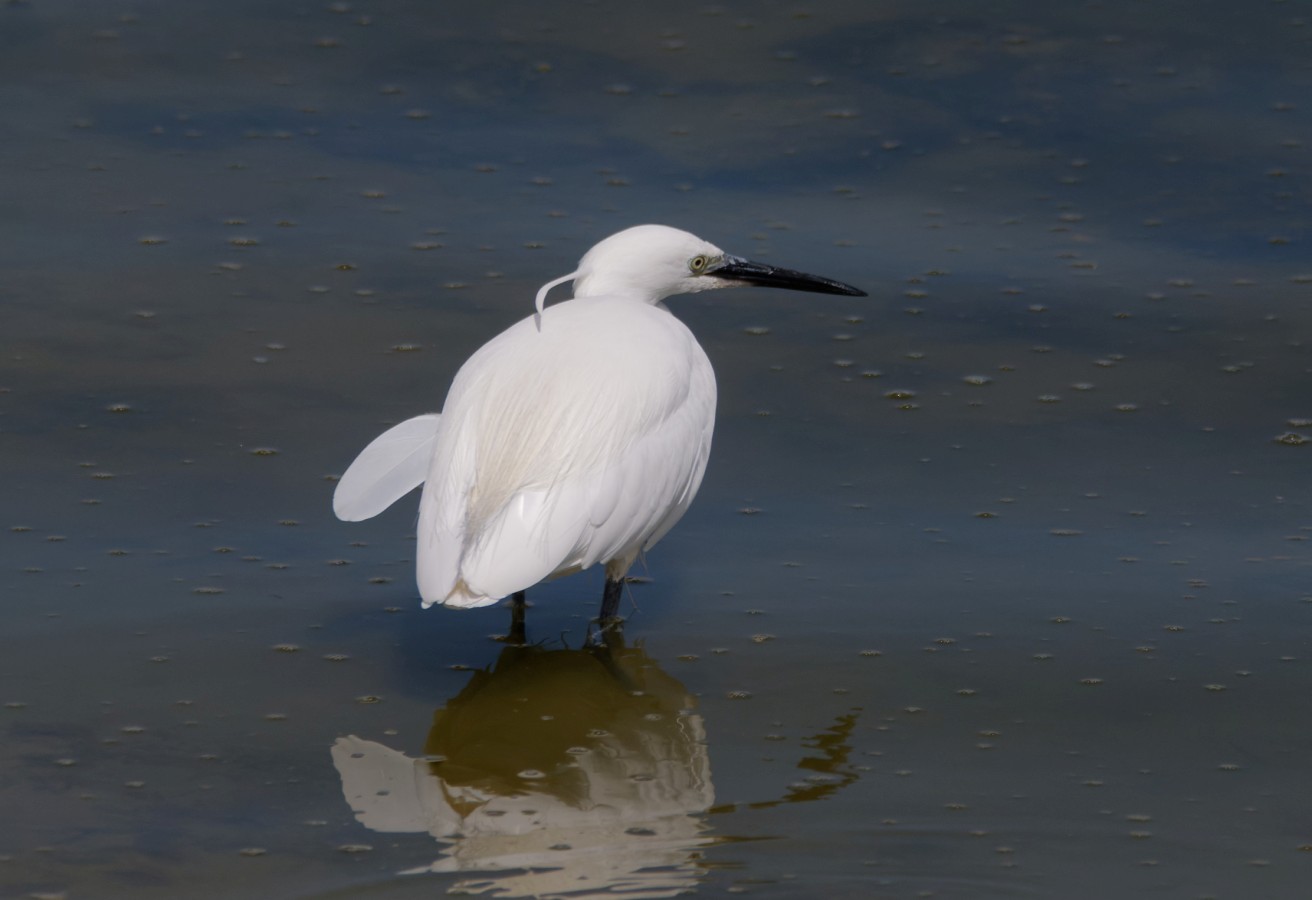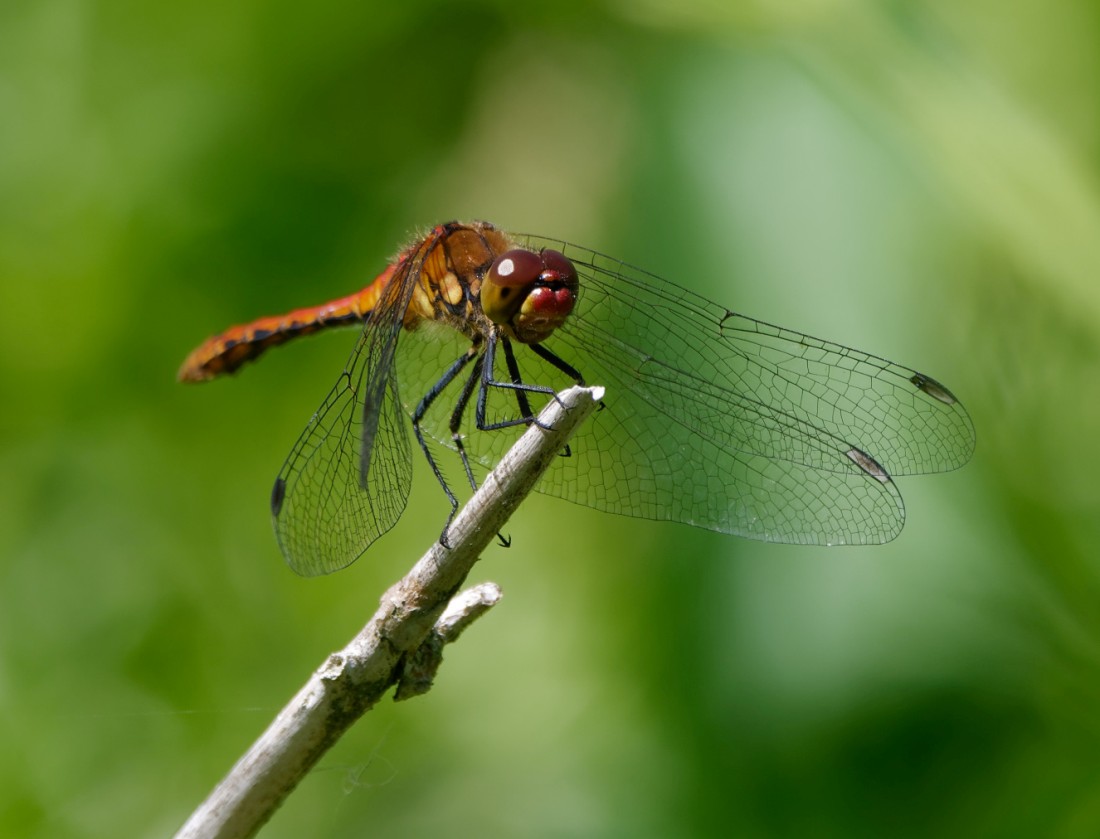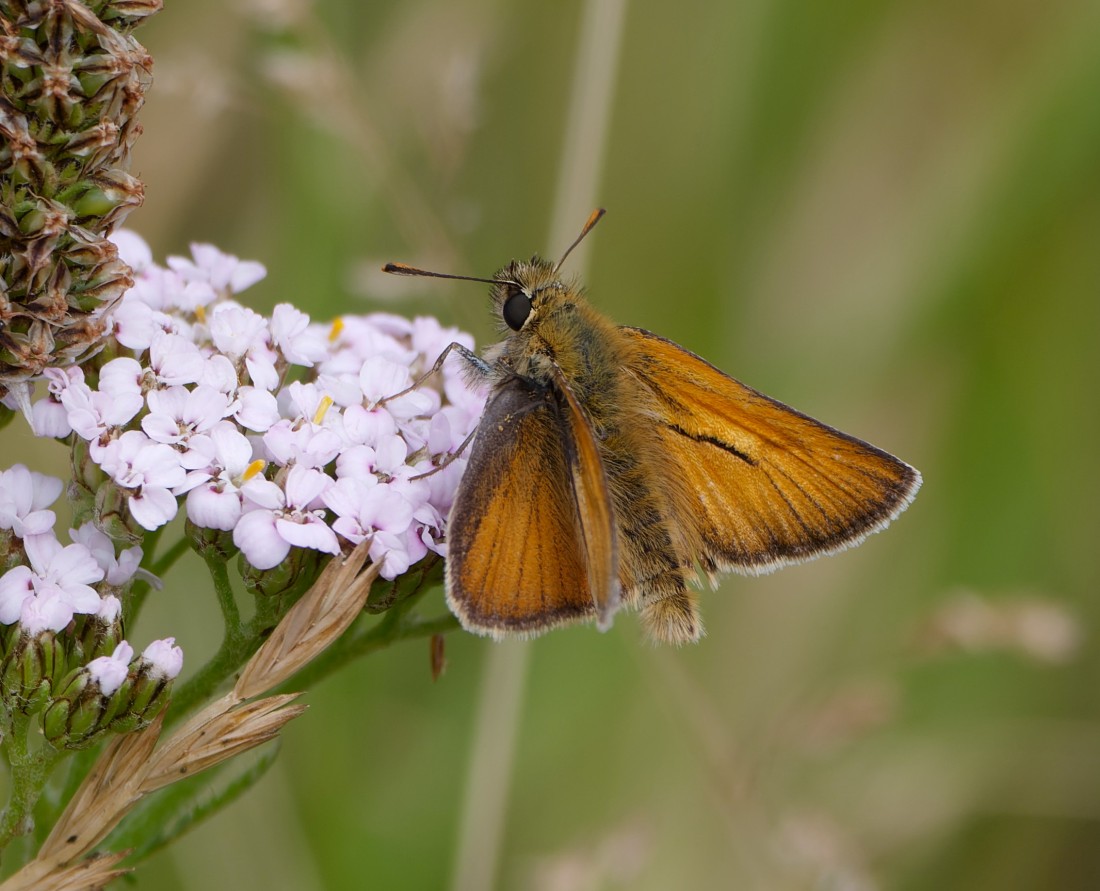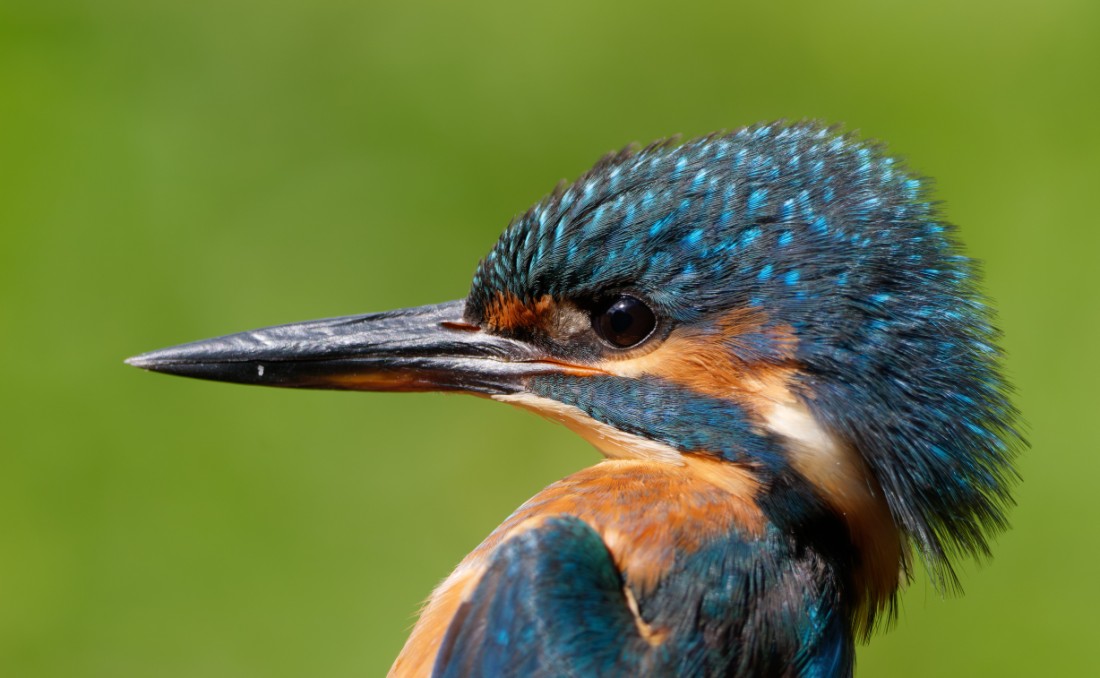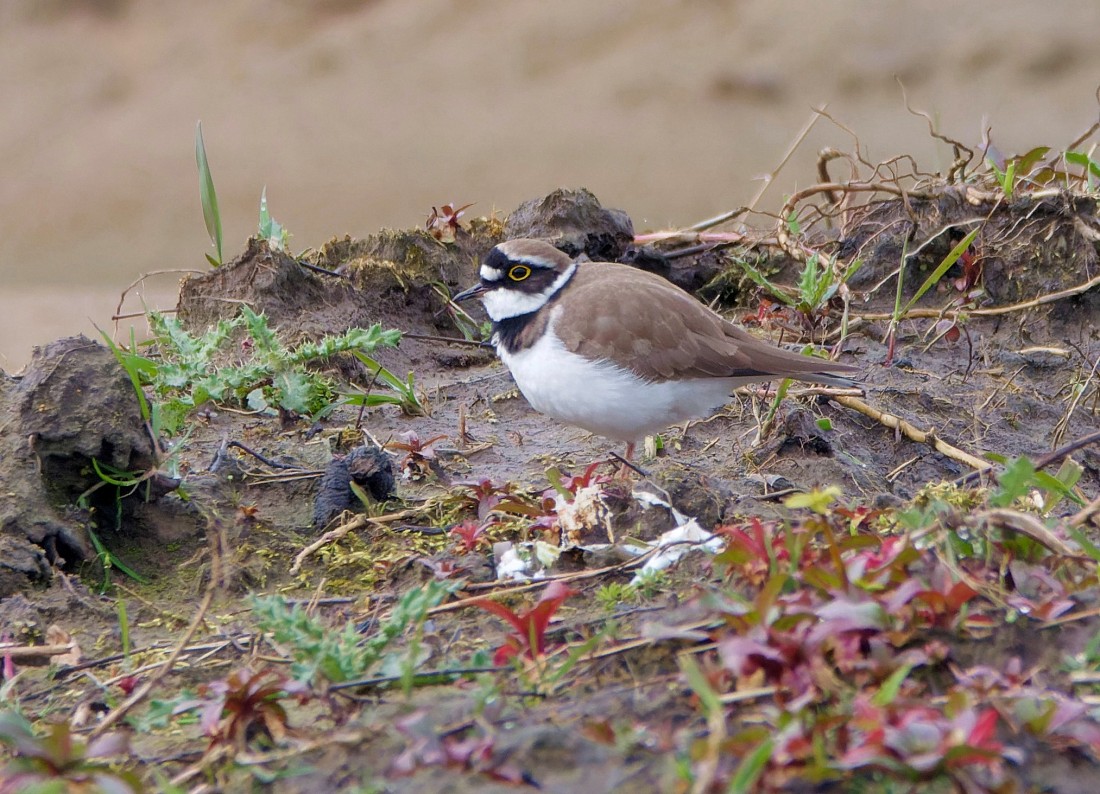Woolston Eyes Monthly Sightings
2022-07-31
Just posting photos of some of the Odonata recorded on Nos.1 and 3 beds during the month.
Photo of Ruddy Darter
Submitted by: Brian Baird
2022-07-30
It’s a sure sign that autumn is just around the corner when Swifts start pouring southwards. Today saw almost 1,000 pass over in large groups, pausing briefly to feed over the wetland areas before moving on. Travelling alongside them were small numbers of hirundines, with 45 Sand Martins and a handful each of Swallows and House Martins. Two Hobbies were inevitably trying to take advantage of the presence of so much potential prey, though without any evident success. Two Black-necked Grebes were still loitering on No.4 bed and though the juvenile will soon move on, the moulting adult should be around for a while yet. The morning’s biggest surprise, though, came with the group of 5 Garganey skulking behind one of the islands. This year has been our best ever, by a distance, for this small, skulking migrant duck. Waders were in short supply, though, with just two Green Sandpipers and a Curlew located. Finally, 2 Common Terns were reported passing through No.3 bed, topping off an excellent morning. Photo of the Holly Blue Cheers David Bowman (with Dan Owen, Helen Wynn, Sue Haddock, Brian Baird and Sean Hennessy)
Submitted by: David Bowman
2022-07-28
It was quiet, early on, with just 1 Little Ringed Plover and 1 Green Sandpiper the only new waders on the wetland, though 2 Garganey and 2 Black-necked Grebes were also present. Over to the west 80 Swifts were hawking for insects, presumably all from the Westy Estate breeding population, with a Hobby putting in an appearance, no doubt attracted by so much potential prey. Another Green Sandpiper was then in front of the Morgan Hide in No.3 bed, while 60 Swifts and a handful each of Swallows and Sand Martins moved south. As is so often the case, a final flourish came in early afternoon, when 11 Black-tailed Godwits arrived to circle No.4 bed before carrying on to the west and 4 more Green Sandpipers were found feeding on the Loop of the bed. Photo of Black-tailed Godwits Cheers David Bowman (with Dan Owen)
Submitted by: David Bowman
2022-07-26
A quietish morning, starting off cool and cloudy before heating up as the day progressed. The only sign of movement was an over-flying Yellow Wagtail and a Little Egret on the new wetland, so the concentration was on our breeding birds. The pick of the bunch were the two Garganey (adult and juvenile females) on No.3 bed, the three family parties of Willow Tits along the track into No.4 bed, the five remaining Black-necked Grebes on No.4 bed (2 adults) and the masses of juvenile warblers feeding everywhere. Kingfisher and Water Rail were also good to see and are a daily sight at this time of year. While large numbers of moulting Gadwall were still present, many others were now able to fly and the impression was of reduced numbers from the high of more than a thousand.
Photo of a Black-tailed Skimmer
Cheers David Bowman (with Dan Owen)
Submitted by: David Bowman
2022-07-23
Although a light drizzle moved in mid-morning, it was another day for enjoying the wader passage. The highlight was the 3rd Wood Sandpiper of the week, an adult which dropped in at the No.4 bed Wetland to join 4 Green Sandpipers, 2 Common Sandpipers and 6 Little Ringed Plovers. Early on, No.3 bed chipped in with 2 more Green Sandpipers and a Redshank, though the most spectacular sight was the raft of 865 moulting Gadwall out on the water not long after dawn. While it was nice to finish the morning with a passing Common Tern on No.3 bed, the most memorable sighting came when a Kingfisher landed on the ledge of the window I was looking through in the Morgan Hide, hardly a foot from my face. I think it was after a spider which was hanging from its web in the corner of the window. Hard to say which of us was the most surprised! Finally, its nice to report that, for the second successive year, our resident pair of Marsh Harriers has successfully fledged two young. Photo of a Chiffchaff Cheers David Bowman (with Sue Haddock)
Submitted by: David Bowman
2022-07-22
Photo of a juvenile Garganey in company with a Mallard. Cheers David
Submitted by: David Bowman
2022-07-22
Yesterday conditions were good for wader passage. It was a nice start, too, on No.4 bed, with a close encounter with a large Badger. Out on the wetland, 3 Green Sandpipers were feeding, soon joined by a fourth. Then 3 more waders arrived - 2 Little Ringed Plovers and the day’s first highlight, a juvenile Wood Sandpiper, which flew around, calling before being lost to sight at the north end of the wetland. Out on the water 4 Black-necked Grebes were still present (2 adults and 2 juveniles) before another 3 waders flew in - a Dunlin, another Little Ringed Plover and one which vanished before we could confirm the ID. We then spent a couple of hours in No.3 bed, where a juvenile Garganey was the star bird, a nice summer plumaged Black-tailed Godwit and an Oystercatcher added to the wader list and a further juvenile Black-necked Grebe was located. Finally, back on No.4 bed, we were treated to prolonged views of an adult Wood Sandpiper, which came in from the south and was feeding hungrily out on the mud. Over the morning, too, 4 Little Egrets passed through, all heading west. Photo of a Black-tailed Godwit Cheers David (with Dan Owen)
Submitted by: David Bowman
2022-07-19
The hottest day of the year saw Dan Owen and I make an early start, scanning for waders on No.4 bed and then heading for the shelter of the Morgan Hide on No.3 bed before it became too oppressive. On No.4 bed there had been a small arrival of waders, with 5 Green Sandpipers and 3 Common Sandpipers feeding out on the exposed mud of the new wetland. Two Hobbies then arrived, an adult and an immature, with the latter snatching a small bird and flying to perch in a tree on the edge of the wetland. Four Black-necked Grebes were still present and as at least one of the 2 adults was in wing moult, it may be around for a while yet. An over-flying Yellow Wagtail then added to the morning’s variety. No.3 bed also held a juvenile Black-necked Grebe and apart from a Yellow Wagtail and 3 Oystercatchers which dropped onto the Morgan Hide scrape it was fairly quiet. Photo of a Lapwing Cheers David Bowman
Submitted by: David Bowman
2022-07-18
Butterfly totals for 13-16 July including the river; 298 gatekeeper, c 52 small white, c.50 green-veined white, 6 red admiral, 38 speckled wood, 64 meadow brown, 14 comma, 2 small skipper, minimum 3 ringlet, 5 holly blue, 4 common blue, 9 small tortoiseshell, 4 large white. We can expect the emergence of the summer brood of peacock any time now.
Submitted by: Dave Hackett
2022-07-17
It dawned cool yesterday but soon warmed up, hinting at the heatwave to come. We started by scanning for wader movement on No.4 bed and had some rewards, with 6 Little Ringed Plovers flying in, calling, an east-bound Curlew, 3 Green Sandpipers and a couple of Oystercatchers. Two Ravens and 2 Little Egrets also flew over, the latter dropping in to feed on the Loop of the bed. Out on the water 7 Black-necked Grebes, 2 adults and 5 juveniles, were actively feeding and it won’t be long before they’re gone for another year. Then it was over to No.3 bed where the highlights were: one (probably two) female Garganey, another juvenile Black-necked Grebe, a Hummingbird Hawk-moth, a Ringlet, plenty of Black-tailed Skimmers and Brown Hawkers and another Hawker dragonfly, which we think was an early Migrant Hawker. (see photo!). Cheers David Bowman (with Dan Owen, Helen Wynn, Brian Baird and Dave Steel)
Submitted by: David Bowman
2022-07-12
A marginally cooler morning, starting on No.4 bed, where a single Little Egret was stalking the shallows for small fish and 8 Black-necked Grebes (2 adults and 6 juveniles) were gathered. To the west of the bed the 80 hawking Swifts were probably the whole of the important breeding population from the nearby Westy housing estate. Walking off the bed, 2 Green Sandpipers were flushed from one of the dwindling pools on the east cell. Then it was on to No.3 bed, where a hunting male Marsh Harrier flushed huge numbers of moulting Gadwall out onto the water. The amazing 880 counted, added to the 50 from No.4 bed, was already a Reserve record, so it seemed worth visiting No.2 bed, which can also hold good numbers of the species. Two more Green Sandpipers then flew over No.3 bed before we headed off to No.2 where we brought our final Gadwall total to 1,015. Not only a Reserve record but also a flock of international importance, for which the threshold is 600. No.2 bed also held a fifth Green Sandpiper and more surprisingly, a ninth Black-necked Grebe, another juvenile. Photo of the Little Egret Cheers David Bowman (with Dan Owen)
Submitted by: David Bowman
2022-07-11
Butterfly totals for the past week; 143 gatekeeper, 82 meadow brown, c.80 green-veined white, c.18 small white, 19 comma, 10 small skipper, 10 speckled wood, 7 purple hairstreak, 6 ringlet, 6 small tortoiseshell, 3 holly blue, 2 large skipper, 2 red admiral, 1 large white and 1 common blue.
Submitted by: Dave Hackett
2022-07-09
On a warm morning and with return passage still in its early days there was little evident movement, though we still managed to turn up a handful of returning waders and complete our usual breeding bird counts. On No.4 bed, 1 Green Sandpiper, 1 Snipe, 1 Oystercatcher, 4 Little Ringed Plovers and 6 Black-necked Grebes were the highlights, with another 4 Black-necked Grebes on No.3 bed. A Hobby put in an appearance mid-morning, hawking for some of the many dragonflies around the bed. The latter included our first 4 Ruddy Darters of the year, along with at least 8 Brown Hawkers, a couple of Emperors and scores of Blue-tailed Damselflies. Butterflies included: Small Skippers, Red Admirals, Small Tortoiseshells, Speckled Woods, Large Whites and Commas. The morning finished with a sighting of an early-returning Siskin and our continuing efforts to document the insect population of the Reserve. Photo of a Ruddy Darter Cheers David Bowman (with Dan Owen, Helen Wynn, Brian Baird, Dave Steel and Sue Haddock)
Submitted by: David Bowman
2022-07-05
There were a few waders on No.4 bed, with a Redshank and 5 Little Ringed Plovers alongside 20 Lapwings. It was nice to see an adult Black-necked Grebe consorting with 4 juveniles, with the young indulging in wing-stretching and practice flights. No doubt the first clear night will see them heading south, though they may wander around other local waters before then. Two new Tufted Duck broods were also a nice surprise on the bed. No.3 bed also held a handful of Black-necked Grebes, with an adult and 3 juveniles still present. The most impressive aspect of the morning, though, was the sheer number of water-birds between the two beds, with outstanding counts of 660 Gadwall and 286 Coot, most of them on No.3 bed where a hunting Marsh Harrier flushed them from cover. At this time of year they are flightless, as they are in the process of moulting and growing new flight feathers and tend keep together in tight rafts for mutual protection. Photo of a Large Skipper Cheers David Bowman (with Dan Owen)
Submitted by: David Bowman
2022-07-02
Close up photo of a Kingfisher ringed on No.3 bed today. Cheers David
Submitted by: David Bowman
2022-07-02
Wader passage seems to have started early this year, with Common Sandpiper, Ruff, Green Sandpipers and Black-tailed Godwits moving through earlier in the week. We started early on the new No.4 bed wetland, where one Ringed Plover, two Little Ringed Plovers plus over-flying Yellow Wagtail and Siskin were a good start. The dispersal of our breeding Black-necked Grebes continues, with an adult and 5 juveniles now having moved from the No.3 bed colony to the new wetland before they finally head south. Then it was off to No.3 bed, where 6 Black-necked Grebes were still present (1 adult and 5 young), along with two new broods of Gadwall and one of Tufted Duck. The theme of wader migration continued, with 14 Black-tailed Godwits flying over the Morgan Hide in the direction of No.4 bed. We couldn’t resist trekking back to the wetland to see if they’d landed there - they hadn’t but a very smart summer plumage Ruff had, making the effort more than worthwhile. Photo of a Little Ringed Plover Cheers David Bowman (with Dan Owen, Helen Wynn, Brian Baird and Dave Steel)
Submitted by: David Bowman

